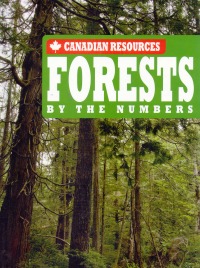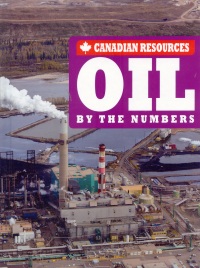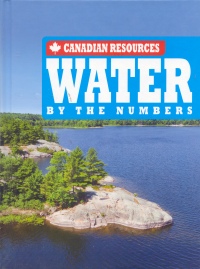| ________________
CM . . . . Volume XX Number 28 . . . . March 21, 2014
excerpt:
The "Canadian Resources" series currently consists of six books: Diamonds, Forests, Gold, Natural Gas, Oil and Water. Three of the books, Forests, Oil and Water, are included in this review. The series' subtitle, By The Numbers, indicates the emphasis on statistics in the content of each book. Pie charts, 3D graphs, pictographs, maps, illustrations and text boxes combine with colourful photographs and simplified text to explain the importance of our natural resources, where they are found and how they are used. Each book contains a simple activity, such as "Make a Lava Lamp" in Oil. Each book also contains a Table of Contents, Key Words, Index, Further Resources, and a short Quiz at the end of the book. One weakness in the books reviewed is the choice and quality of some of the photographs. For example, on page 20 in Forests, a photograph of a person on rope dangling below a helicopter flying over a forest is accompanied by the caption, "About 31 million hectares of Canada's forests are within government-protected areas." It is unclear to me what I am supposed to learn from the inclusion of this photo in the book. Perhaps it is telling me that, if I want to visit a government protected forest, I have to be flown in like James Bond. Even more problematic, the only portrayal of a female working in these natural resources industries is one photo of a hydrologist in Water. This is a serious error by omission. Also, some of the graphs and maps could be clearer. For example, in Oil, the chart illustrating "Oil Consumption by Country" on page 13 uses a map shape of each country with the number of millions of barrels of oil per day used by each country. It seems confusing to have the label "2.3 Canada" beside a label "2.2 South Korea" where the map of South Korea is larger on the page than the map of Canada. The chart is not intended to refer to the physical size of the countries, but it does seem unnecessarily confusing. Perhaps a flag of the country would have been a more generic symbol to identify the country. Forests By the Numbers begins with a quotation attributed to United States President Franklin D. Roosevelt: "Forests are the lungs of our land, purifying the air and giving fresh strength to our people." Unfortunately, this is almost the only recognition in this book of the important role that this natural resource plays in the world ecosystem. Forests are presented as a commercial resource providing Canadians with products to consume and sell around the world. No mention is made of the use of forests as a resource for recreation, although this use also provides significant tourism income. This book should more accurately be called "Forest Industry By The Numbers". Chapters include "Forest Products", "Wood as Paper", "Wood as Lumber", "Building with Wood", "Wood as Energy", "The Forest Industry", "Exporting Wood" and "Working with Trees" and "Managing Forests", which deal only with forest industry jobs. Oil By the Numbers deals directly with the conflict between accessing and processing oil and the environment in a chapter titled "Managing Oil".
Many, but not all, of the graphics in this book present statistics or numbers in ways that are clear and easy to interpret. "Products made with Oil", for example, uses images to represent many different petrochemical products, such as sneakers, computers and backpacks, that students will easily relate to. Water By the Numbers identifies the looming crisis in the world's freshwater supply; however, the "value" referred to is not defined.
A colourful graphic identifies six ideas that students can implement to use less water, with one being, "Taking one minute off a daily shower saves up to 568 litres of water each month." Chapters include "Water Processing", "How Canada Uses Water", "Water in the Home", "Industry Water Use", "Water in Food", "Water as Electricity", "The Water Industry", "Water Technology", "Working with Water" and "Managing Water". Although these books all have weaknesses, the statistics and information are specifically Canadian, and this focus gives the books their value. Highly Recommended. Suzanne Pierson, a retired teacher-librarian, is currently instructing Librarianship courses at Queen's University in Kingston, ON.
To comment
on this title or this review, send mail to cm@umanitoba.ca.
Copyright © the Manitoba Library Association. Reproduction for personal
use is permitted only if this copyright notice is maintained. Any
other reproduction is prohibited without permission.
NEXT REVIEW |
TABLE OF CONTENTS FOR THIS ISSUE
- March 21, 2014.
AUTHORS |
TITLES |
MEDIA REVIEWS |
PROFILES |
BACK ISSUES |
SEARCH |
CMARCHIVE |
HOME |


